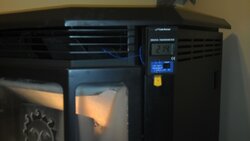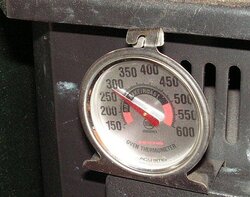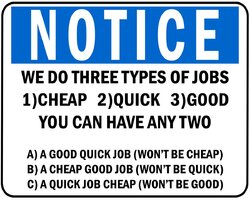So since I am so new to this I am trying to get all of my ducks in a row. I am waiting for my stove to come in and researching pellets. Through all of my reading almost all of the reviews on the pellets talk about how hot some burn or how some don't burn hot enough. My question is how do you measure the heat output on the actual stove. Do I just buy a thermometer and clip it to the heat vent? Or is there another piece of equipment that I need to buy to measure this? I am going to try as many different bags/brands that are available to me and I want to make sure I make the best decision based on facts from MY stove before I buy in bulk.
How do you measure heat output from your stove?
- Thread starter Paul Raz
- Start date
-
Active since 1995, Hearth.com is THE place on the internet for free information and advice about wood stoves, pellet stoves and other energy saving equipment.
We strive to provide opinions, articles, discussions and history related to Hearth Products and in a more general sense, energy issues.
We promote the EFFICIENT, RESPONSIBLE, CLEAN and SAFE use of all fuels, whether renewable or fossil.
You are using an out of date browser. It may not display this or other websites correctly.
You should upgrade or use an alternative browser.
You should upgrade or use an alternative browser.
- Status
- Not open for further replies.
IHATEPROPANE
Minister of Fire
I use an infrared gun and hit the same spot in a piece of metal in front if the heat exchanger tubes....not ideal but I figure if I am consistent it is worth something.
Woody1911a1
Feeling the Heat
Danny Cathcart
Member
No fancy gadget other then using my derriere, standing in front of my stove, expressing one long and exulted sigh of giving thanks.
heat seeker
Minister of Fire
I stuck a magnetic wood stove thermometer on the front of mine, just so it catches a bit of the hot air coming out. I don't know how accurate it is, but I use it for relative measurements of heat, so I can compare pellet brands, etc. I'm also assuming it may show me if the stove is having problems. The highest I've gotten it to read is 450 deg.F with really good pellets. I usually get around 300 degrees on medium high feedrate.
I was thinking that I could get one of those small meat thermometers w/ the clips on them and stick it into the grate, but I do have an infrared gun as well. That may not be a bad idea.
Woody1911a1
Feeling the Heat
hmmmm , i'd be thinking of measuring the heat coming out of the stove rather than the heat "of" the stove .
heat seeker
Minister of Fire
subsailor
Minister of Fire
hmmmm , i'd be thinking of measuring the heat coming out of the stove rather than the heat "of" the stove .
You're right, but like he said, it's a quick way to see what your stove is doing. I keep one on the side of mine and wouldn't be without it.
Woody1911a1
Feeling the Heat
A meat thermometer may not read high enough.
my readings are in the 150f neighborhood so no problemo

One of these has to get close I assume. Or is there a thermometer made for stoves for this very reason?
Lorne41
Member
D
DexterDay
Guest
Cole Parmer Thermocouple. It was under $30 on Ebay and less than $40 shipped. But I know the exact air temps for every pellet I run through the stove.
It is 1" away from the exchange tube (same tube).
There is a small magnet clip that holds the end inside (tubes are recessed) and 1" out from the tube in the middle of the air stream.
Its cheap and accurate. I used to use a digital meat thermometer. It was $17 at Target. Before that was a magnetic thermometer as noted above.
As long as its consistent, you should see a difference from pellet to pellet. But always use the same means, in the same spot.

It is 1" away from the exchange tube (same tube).
There is a small magnet clip that holds the end inside (tubes are recessed) and 1" out from the tube in the middle of the air stream.
Its cheap and accurate. I used to use a digital meat thermometer. It was $17 at Target. Before that was a magnetic thermometer as noted above.
As long as its consistent, you should see a difference from pellet to pellet. But always use the same means, in the same spot.

SteveB
Member
Cole Parmer Thermocouple. It was under $30 on Ebay and less than $40 shipped. But I know the exact air temps for every pellet I run through the stove.
It is 1" away from the exchange tube (same tube).
There is a small magnet clip that holds the end inside (tubes are recessed) and 1" out from the tube in the middle of the air stream.
Its cheap and accurate. I used to use a digital meat thermometer. It was $17 at Target. Before that was a magnetic thermometer as noted above.
As long as its consistent, you should see a difference from pellet to pellet. But always use the same means, in the same spot.
View attachment 78242
OCD in action, lol! Seriously, Cole-Parmer does make some nice instruments. Might have to look into one of those myself

kinsmanstoves
Minister of Fire
WoodPorn
Minister of Fire
Harvey Schneider
Minister of Fire
There are so many variables that aren't taken into account. Fuel feed rate, combustion blower volume/hr, convection blower volume/hr, convection inlet temperature are just the obvious ones. Using firebox temperature rather than convection air temperature only partially removes convection parameters from the measurement,
Pellets are just wood, and wood will reach an equilibrium moisture content dependent on the air temperature and relative humidity of the environment they are stored in. Moisture content affects the heating value of the pellets.
The best you will do is a rough estimate of the heating value.
I see more value in evaluating the residual ash, tars/creosote, and clinkers.
We all love to measure things because once we have a number we can convince ourselves that we know something.
My advice is "enjoy the warmth", and that's an engineer talking.
Pellets are just wood, and wood will reach an equilibrium moisture content dependent on the air temperature and relative humidity of the environment they are stored in. Moisture content affects the heating value of the pellets.
The best you will do is a rough estimate of the heating value.
I see more value in evaluating the residual ash, tars/creosote, and clinkers.
We all love to measure things because once we have a number we can convince ourselves that we know something.
My advice is "enjoy the warmth", and that's an engineer talking.
WoodPorn
Minister of Fire
There are so many variables that aren't taken into account. Fuel feed rate, combustion blower volume/hr, convection blower volume/hr, convection inlet temperature are just the obvious ones. Using firebox temperature rather than convection air temperature only partially removes convection parameters from the measurement,
Pellets are just wood, and wood will reach an equilibrium moisture content dependent on the air temperature and relative humidity of the environment they are stored in. Moisture content affects the heating value of the pellets.
The best you will do is a rough estimate of the heating value.
I see more value in evaluating the residual ash, tars/creosote, and clinkers.
We all love to measure things because once we have a number we can convince ourselves that we know something.
My advice is "enjoy the warmth", and that's an engineer talking.
Or... You could get a thermometer to record a baseline and wiegh that number against other pellets.
jtakeman
Minister of Fire
There are so many variables that aren't taken into account. Fuel feed rate, combustion blower volume/hr, convection blower volume/hr, convection inlet temperature are just the obvious ones. Using firebox temperature rather than convection air temperature only partially removes convection parameters from the measurement,
Pellets are just wood, and wood will reach an equilibrium moisture content dependent on the air temperature and relative humidity of the environment they are stored in. Moisture content affects the heating value of the pellets.
The best you will do is a rough estimate of the heating value.
I see more value in evaluating the residual ash, tars/creosote, and clinkers.
We all love to measure things because once we have a number we can convince ourselves that we know something.
My advice is "enjoy the warmth", and that's an engineer talking.
Welcome Harvey, What I try to do is set the stove to the same settings for each pellet brand for comparision. I also have the temp probe in the exact same spot. Just trying to eleminate some of the variables. I also measure ash volume and weight, Along with fines volume and weight.
To keep tabs on size and bulk density, I time the burn length. Timing the length of burn helps to see if they last similar amounts of time. The hotter pellet will generally not last as long as the cooler burning brands. But I have seen some hot stuff last pretty close to the cooler stuff. My goal is to find the hottest burning pellet that lasts the longest at the cheapest price I can find. A bit of a jigsaw puzzle!
If I could measure BTU/lbs like the pro's It would be much easier. But the equipment is utterly ridiculous. So I do what I can to keep tabs on things. I call them spot checks and have found a few mills sending product to market that is out of PFI spec.
It justs adds a bit of fun to the "enjoying the warmth". Keeps the mind active.

Thats the exact reason I was looking for one. I see everyone talking about this pellet burning hotter than this one or not as hot. Or this one stinks....etc! I wanted a way to measure the heat output to measure the heat given off by different pellets.Or... You could get a thermometer to record a baseline and wiegh that number against other pellets.
This reminds me of...My goal is to find the hottest burning pellet that lasts the longest at the cheapest price I can find. A bit of a jigsaw puzzle!
Attachments
MSmith66
Feeling the Heat
So since I am so new to this I am trying to get all of my ducks in a row. I am waiting for my stove to come in and researching pellets. Through all of my reading almost all of the reviews on the pellets talk about how hot some burn or how some don't burn hot enough. My question is how do you measure the heat output on the actual stove. Do I just buy a thermometer and clip it to the heat vent? Or is there another piece of equipment that I need to buy to measure this? I am going to try as many different bags/brands that are available to me and I want to make sure I make the best decision based on facts from MY stove before I buy in bulk.
When wife is warm, I'm happy
 !
!I hear ya! My wife looks for facts. With a temp gauge I can tell what is what and justify paying for better pellets or not.
- Status
- Not open for further replies.
Similar threads
- Replies
- 1
- Views
- 466
- Replies
- 18
- Views
- 641
- Replies
- 13
- Views
- 919
- Replies
- 7
- Views
- 351




